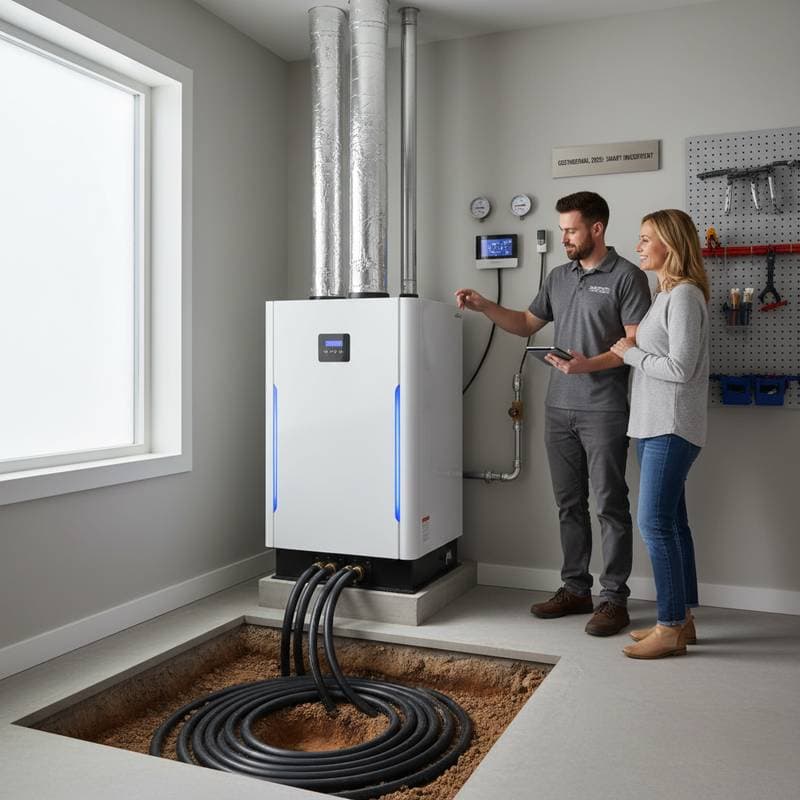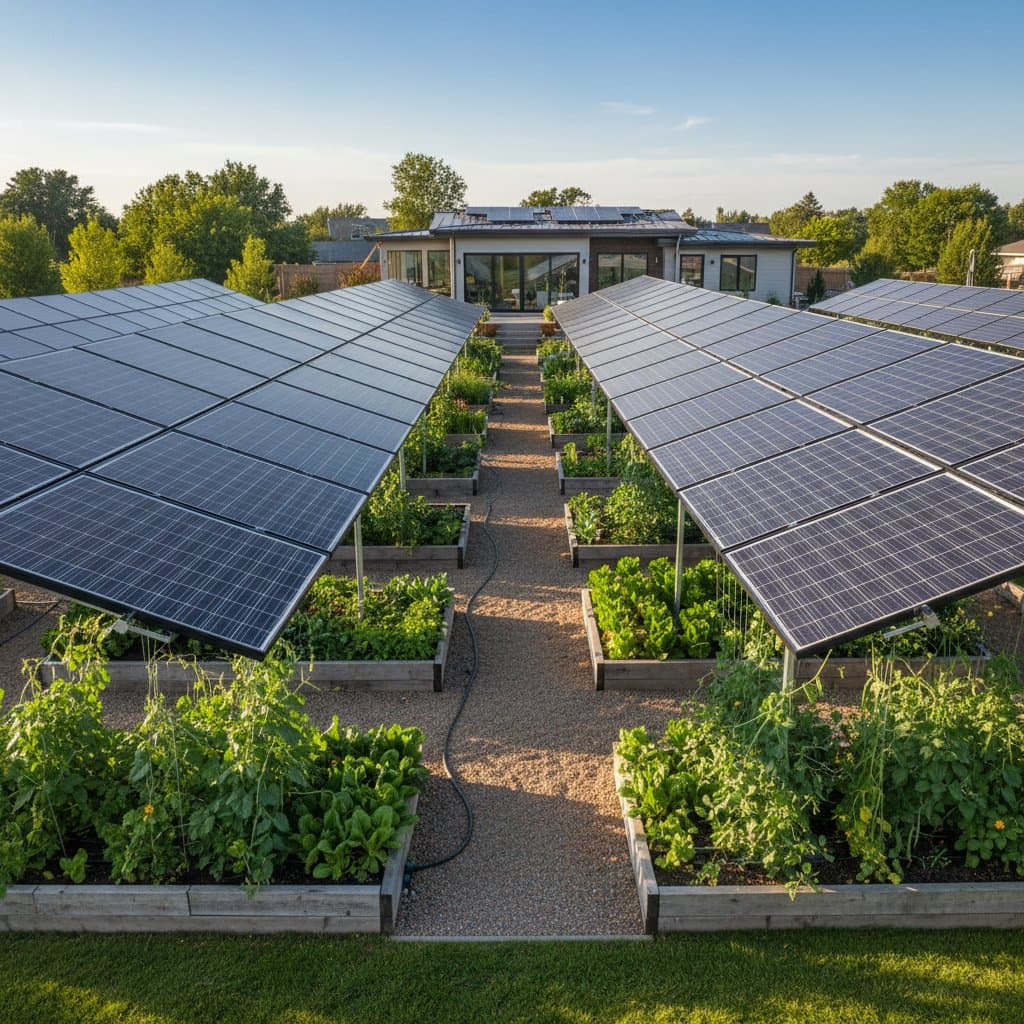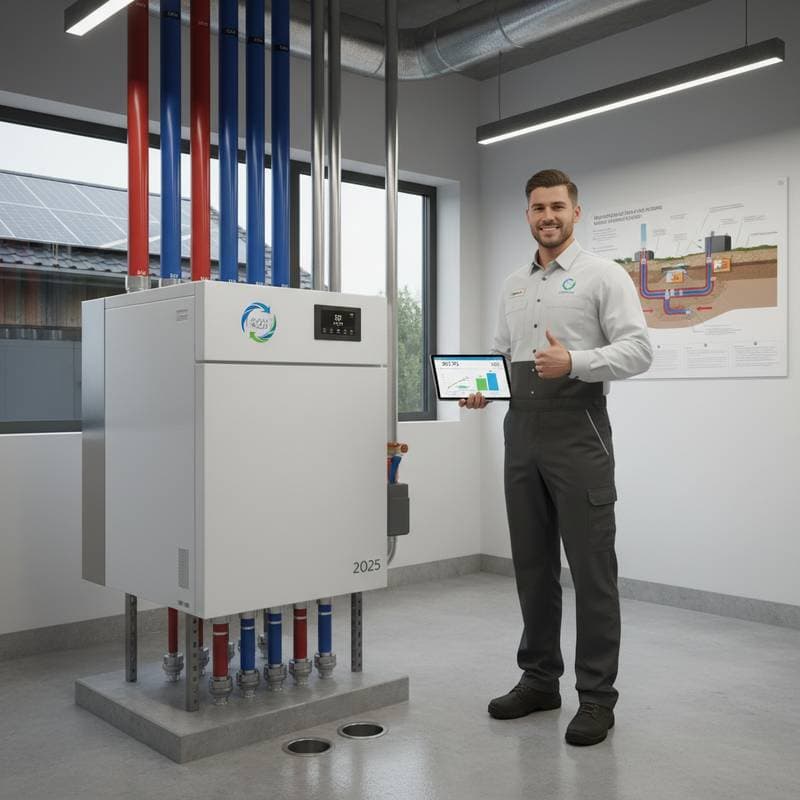Key Points
- Homeowners achieve up to 65 percent reductions in heating and cooling costs through geothermal HVAC systems.
- Ground-source heat pumps deliver steady performance independent of external weather conditions.
- Initial installation expenses yield returns via sustained savings, available rebates, and enhanced home equity.
- Optimal efficiency demands thorough site analysis, precise system design, and scheduled upkeep.
- These systems ensure silent functionality, reduced servicing needs, and dependable climate control in diverse regions.
Balancing Comfort and Expenses in Home Heating and Cooling
Homeowners everywhere grapple with maintaining ideal indoor temperatures while controlling rising utility expenses. Harsh winters demand robust heating, and prolonged summers require effective cooling, yet conventional HVAC units frequently falter in delivering both with optimal energy use. This leads to elevated consumption, regular repairs, and fluctuating bills that strain budgets.
Geothermal heating and cooling systems reverse this pattern. They harness the earth's steady subsurface temperatures as a renewable resource to provide consistent comfort using minimal power. Claims of up to 65 percent savings on energy bills stem from established thermodynamic processes and extensive field data spanning decades.
Strategic Value of Geothermal Systems for Residential Use
Adopting a geothermal system represents a prudent choice for both finances and ecology. Energy costs often rank as the second-largest recurring home expense after housing payments. Halving those outlays liberates funds for other needs and simultaneously lowers the residence's environmental impact.
On the ecological front, these systems access one of the purest renewable sources. Subsurface earth temperatures remain stable throughout the year. Rather than relying on fossil fuel combustion or inefficient air handling, a geothermal heat pump facilitates heat exchange between the home and soil. This approach substantially diminishes carbon emissions relative to standard HVAC alternatives.
Regarding market appeal, geothermal setups enhance property attractiveness. Prospective buyers prioritize residences with diminished operational costs and eco-friendly features. In tight real estate markets, such installations serve as compelling selling points that elevate perceived value.
Operational Mechanics of Geothermal Technology
Central to geothermal functionality lies the ground-source heat pump, which employs a sealed network of underground pipes positioned below the frost line. This setup circulates a heat-transfer fluid to exchange thermal energy between the earth and interior spaces. In colder months, the pump draws warmth from the ground to warm the home; during warmer periods, it expels excess indoor heat into the soil.
Various loop arrangements adapt to distinct property layouts:
- Horizontal Loops: Laid in shallow trenches, these suit expansive yards with ample surface area.
- Vertical Loops: Installed via deep boreholes, they accommodate constrained spaces or uneven terrain.
- Pond or Lake Loops: Submerged in nearby water bodies, they maximize efficiency where aquatic access exists.
All variants leverage the earth's uniform thermal profile as a stable energy bank. Consequently, performance remains consistent amid surface temperature variations.
Financial Analysis, Returns, and Enduring Benefits
Upfront expenditures for geothermal installation may seem substantial, typically ranging from $20,000 to $40,000 based on capacity, excavation needs, and regional factors. However, extended financial outcomes reveal strong viability.
Annual energy reductions of up to 65 percent translate to meaningful relief. For a family incurring $3,000 yearly on HVAC operations, a geothermal unit might lower that to approximately $1,000. Across ten years, cumulative savings could recoup a significant portion of the initial outlay. Layer in utility rebates, low-rate loans, and tax credits, and recovery timelines shorten considerably.
Servicing demands further tilt economics in favor of geothermal. Protected from external wear, components experience less degradation. Systems endure for decades with routine checks and filter replacements; underground loops often persist 50 years, while pumps last 20 or more.
As an asset, geothermal integration trims ongoing expenses and bolsters structural worth. Improved cash flow supports daily finances, and robust construction elevates the home's overall appraisal.
Ecological Gains and Enhanced Living Quality
Beyond mere efficiency, geothermal units yield profound environmental advantages. They curb emissions by forgoing fuel burning and optimizing power draw. Operation proceeds without the clamor of external compressors, ensuring peaceful surroundings free from vibrations.
Comfort levels rise noticeably indoors. Steady, low-speed circulation avoids the temperature swings typical of conventional setups. Superior humidity regulation, cleaner air distribution, and elimination of drafts foster a more pleasant atmosphere.
For health-conscious residents, these systems integrate seamlessly with premium filtration and fresh air systems. Such combinations promote better respiratory health and general indoor vitality.
Essential Considerations for Expert Installation
Geothermal deployment involves precise engineering and property assessment. Factors like soil type, water retention, and lot dimensions dictate the ideal loop type.
Experienced installers initiate with comprehensive heat load computations to specify unit size accurately. Proper scaling prevents energy waste from overcapacity or comfort shortfalls from undersizing.
Excavation work requires adherence to codes and ecological standards by certified teams. Accurate pipe positioning and fluid management guarantee operational integrity. Hybrid configurations, blending geothermal with legacy HVAC, enable gradual upgrades for budget-conscious owners.
When evaluating proposals, scrutinize comprehensive pricing, warranty terms, and support contracts. Prioritize contractors with verified geothermal expertise and credentials over lowest bids alone.
Funding and Support Resources
Support for geothermal projects has expanded through diverse channels. Utilities and municipalities frequently extend rebates or favorable loans to promote clean energy shifts. Certain initiatives reward high-efficiency installations with performance bonuses.
Specialized mortgages for energy upgrades incorporate projected savings into qualification criteria. This structure permits financing without elevating payments, ideal for purchases or renovations.
Timing replacements of aging HVAC with geothermal maximizes rebates. Synergizing with enhancements like better insulation or efficient glazing compounds efficiency gains and accelerates payback.
Resolving Typical Questions
Suitable Only for New Builds?
Not at all. Retrofitting prevails widely, with vertical loops fitting compact areas and reusing much of existing ducting after adjustments.
Land Requirements?
Horizontal designs need broader areas, yet vertical options thrive on modest plots. Urban settings may employ innovative layouts or communal drilling.
Underground Loop Failures?
Sealed with safe fluids, loops resist issues; detection via pressure tests simplifies resolutions. Materials ensure longevity exceeding the home's lifespan.
Climate Compatibility?
Fully versatile. Stable subsurface conditions support efficacy in frigid or sweltering zones alike.
Maintenance Demands?
Straightforward: filter swaps and yearly professional reviews suffice. Sheltered design minimizes weather-related breakdowns.
Building Resilience Through Geothermal Adoption
Geothermal setups fortify homes against volatile energy markets and grid pressures. Their reliance on earth's thermal reserves moderates electricity needs, buffering against rate hikes.
Durability underpins dependability. Subsurface elements shield against extremes, rust, and harm. Thoughtful execution yields multi-generational service.
Ecologically, prolonged use cuts waste and emissions over the lifecycle. Each additional operational year amplifies fiscal and planetary benefits.
Positioning Your Home for Energy Independence
Evolving regulations and efficiency mandates will prize properties with integrated renewables. Geothermal aligns with trends in zero-energy and superior dwellings.
Pairing with solar arrays lessens grid dependence further. Advanced controls, zoned distribution, and monitoring tools refine usage for peak comfort at minimal cost.
Properties merging geothermal prowess with generation capabilities excel in livability and resale potential. This proactive strategy equips homes for impending energy paradigms.
Steps to Implement Geothermal Solutions
Ready owners initiate with targeted preparation.
- Arrange a professional site review to assess geology, layout, and needs.
- Solicit detailed quotes featuring full-cost projections beyond upfront fees.
- Investigate rebates and loans via utility providers or agencies.
- Integrate complementary measures like sealing drafts to heighten impacts.
- Establish ongoing monitoring through regular checkups and efficiency logs.









